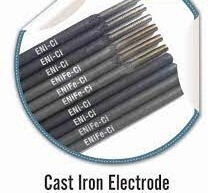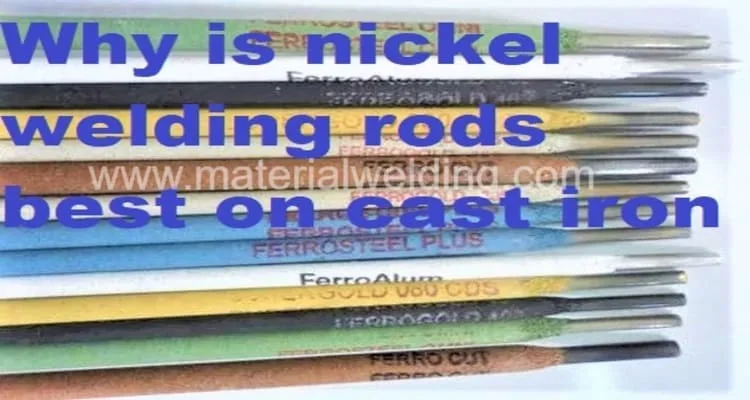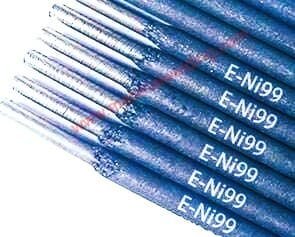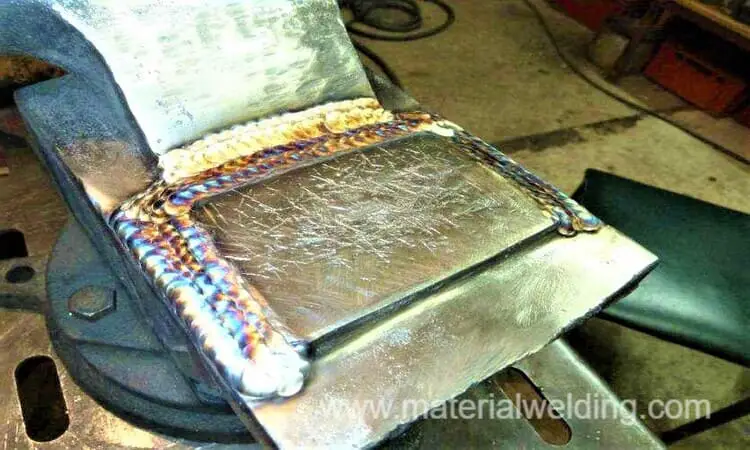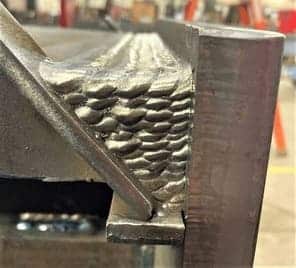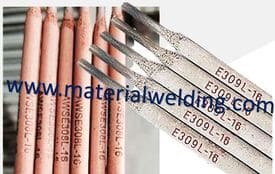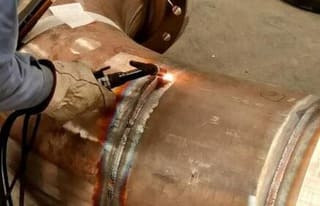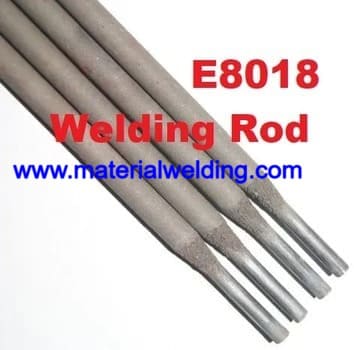Nickel 55 welding rod is a Iron-Nickel (Fe-Ni) alloyed cast iron Stick welding rod. It is made from 45- 60% nickel, 4% Silicon and balance Iron as main elements. Nickel 55 is ideal for welding Cast Iron, Cast iron to stainless steel, carbon steel, and low alloy steels including mild steel.
This welding rod has excellent weldability and crack resistance properties, making it an ideal choice for cast Iron repair works.
Nickel 55 Welding Rod Number, Classification & Specification
Nickel-55 Welding Rod number is ENiFe-CI. This is actually the classification number of Nickel 55 rod as per AWS A5.15.
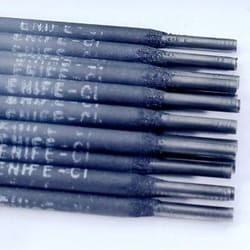
Chemical Composition & Mechanical Properties of Nickel 55 Welding Rod
Nickel 55 welding rod is a versatile, all-purpose cast iron welding rod that can be used for a variety of applications.
Related Reading: Why Nickel Rods are best for Cast Iron Welding?
The chemical composition and mechanical properties of Nickel 55 Rod are covered below:
| Element | Wt. % |
| Carbon | 2.0 max. |
| Mn | 2.5 max. |
| Si | 4.0 max. |
| P | — |
| S | 0.03 max. |
| Fe | Balance |
| Ni | 45- 60 |
| Mo | — |
| Cu | 2.5 max. |
| Al | 1.0 max. |
| others | 1.0 max. |
ENiFe-CI (Nickel 55) Chemical composition
Typical weld deposit tensile strength of Nickel 55 (ENiFe-CI) is 84 Ksi, Yield strength is 60 Ksi.
Nickel 55 Welding Rod Polarity
Nickel 55 Welding Rod polarity is AC & DCEP. DCEN polarity is not recommended for Nickel 55 welding as it will result in unstable welding arc.
Nickel 55 Welding Rod Settings
Nickel 55 Welding rod amperage setting depends on the electrode diameter and welding position. Recommended welding amperage and voltage for Nickel 55 welding rod are given in the below table:
Nickel 55 Welding Electrode
Nickel 55 is a versatile welding electrode that can be used for welding of cast iron, cast iron to steel, and other applications. It provides good crack resistance and ductile machinable weld deposit.
Nickel 55 vs Nickel 99 Welding Rod
Nickel 55 and Nickel 99 welding rods are both used for welding of Cast Iron, Cast Iron to Steel welding. They are similar in that they are both made of nickel & Iron but the amount of nickel present in both rod varies. This gives them different weld deposit properties.
Nickel 55 has low amount of Nickel (45-60%) while Nickel 99 Welding rod contains minimum 85% Nickel. Nickel 55 weld deposit is less ductile due to higher Iron compared to Nickel 99.
Due to high nickel, Nickel 99 has low strength, low hardness & good machinability compared to Nickel 55 Rod.
So, which one should you use? It really depends on the application. If you need a strong weld for a heavy duty application, go with Nickel 99. If you need an easy to use welding rod for high crack resistance & low hardness, go with Nickel 55.
Nickel 55 TIG Welding Rod and Welding Wire
Nickel 55 Welding wire is also available in market for welding cast Iron using TIG Welding and MIG welding. Using Nickel 55 welding wire, you can ensure higher weld deposit for large casting repairs.
These wires are currently not classified in a AWS Specification but they give a weld deposit chemistry similar to the AWS A5.15, ENiFei-CI welding rod. When using Nickel 55 MIG wire, Argon 75%+He25% gas mixture is used for weld shielding.
Pure argon is used for weld shielding for TIG welding using Nickel 55 TIG filler wire. MiG wires are available in sizes of 0.035, 0.045, 1/16 inches while TIG wires are available in 0.035, 0.045, 1/16, 3/32, 1/8 inches diameter.
Is Nickel 55 Weld deposit is machinable?
Nickel 55 weld deposit is machinable, meaning that it can be worked with after it has been deposited. This is important for many applications where the weld needs to be finished or shaped in some way. Nickel 55 is also resistant to corrosion and cracking.
Is Nickel 55 Weld can be used for carbon steel welding?
Yes, Nickel 55 Weld can be used for carbon steel welding. This is because Nickel 55 Weld is made of pure nickel, which provides good weldability and corrosion resistance. In addition, Nickel 55 Weld has a low melting point, making it ideal for use in welding carbon steel.
The drawbacks are:
- High Cost of Nickel 55 rod compare to Carbon Steel rod
- High weld deposit strength compared to carbon steel rod
- Low hardness of weld deposit
- Dissimilar weld metal properties compare to base metal
What is the main use of Nickel 55 Welding Rod?
The main uses of Nickel 55 Welding Rod are Welding of nodular cast iron, Gray Cast Iron, cast iron to carbon steel, cast iron to stainless steel or any ferrous & non-ferrous metals.
